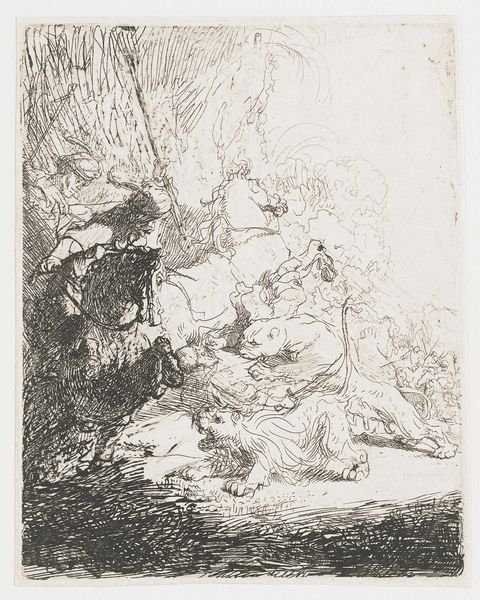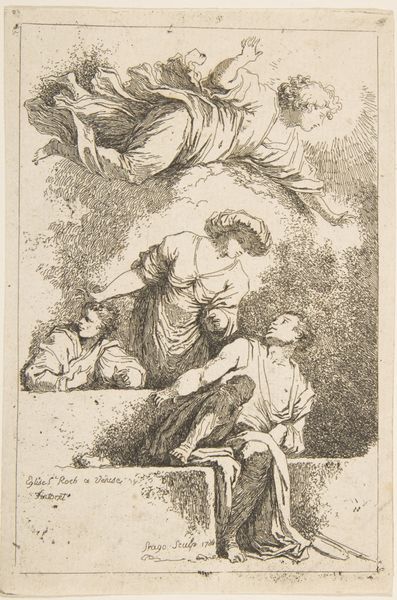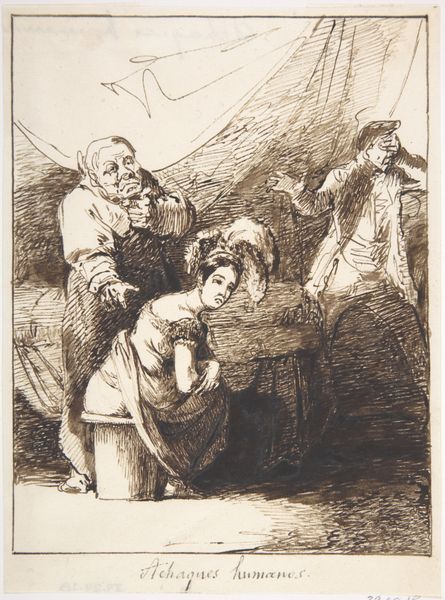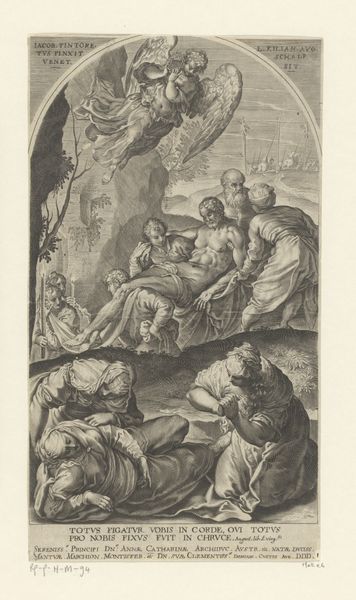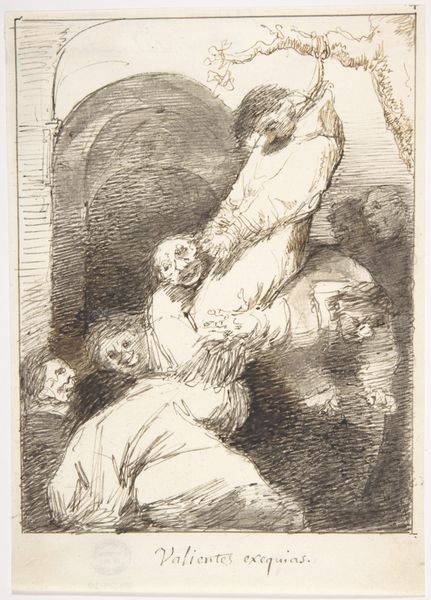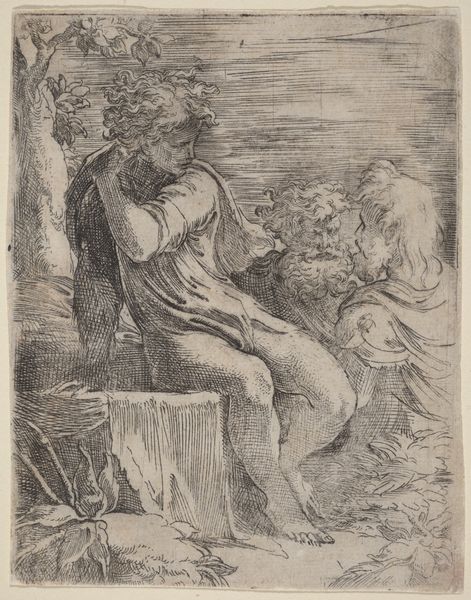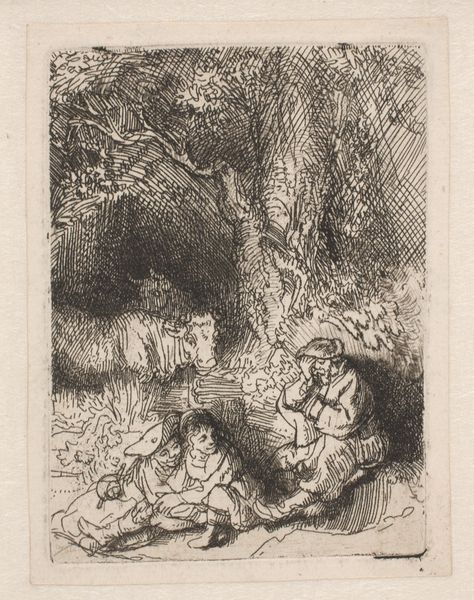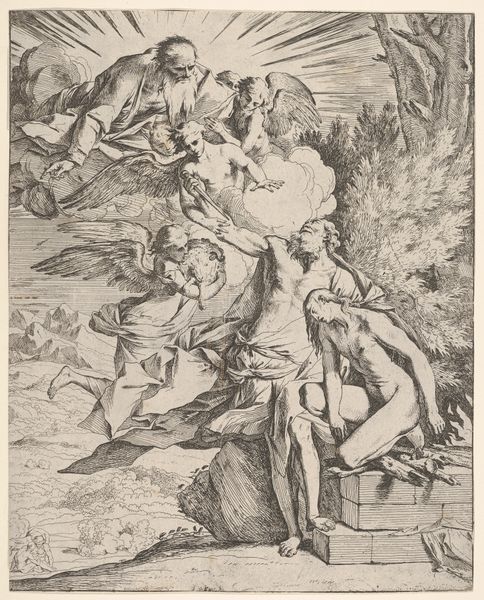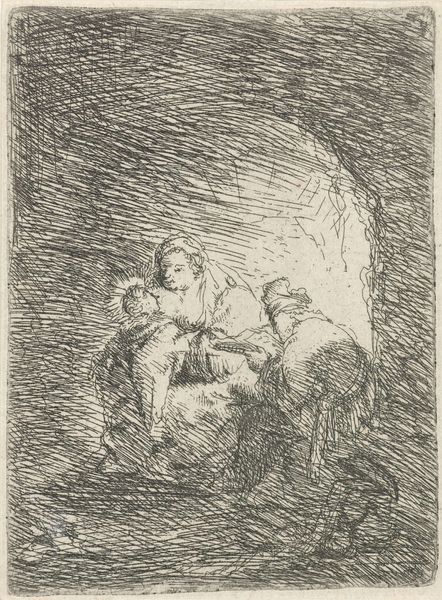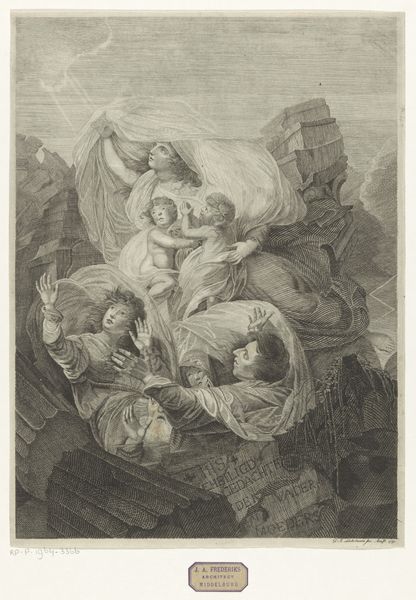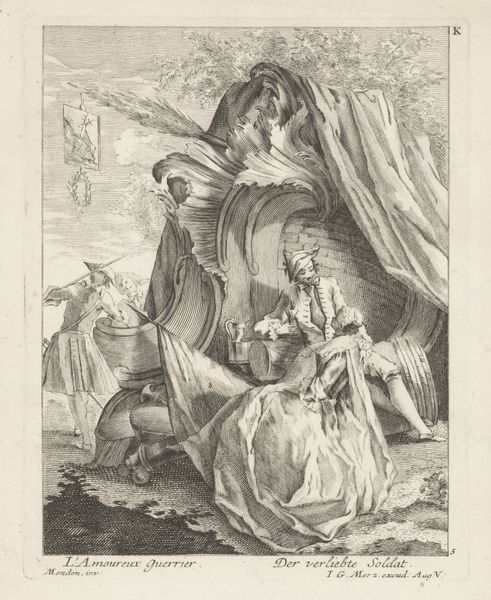
print, etching
#
baroque
# print
#
etching
#
landscape
#
figuration
#
history-painting
Dimensions: plate: 15.6 x 11.4 cm (6 1/8 x 4 1/2 in.) sheet: 15.9 x 11.8 cm (6 1/4 x 4 5/8 in.)
Copyright: National Gallery of Art: CC0 1.0
Editor: So this etching, “The Rest on the Flight into Egypt” by Paul Troger from 1721, has a somewhat frenetic energy. It’s incredibly detailed, all done with these fine lines, which feels very active. What strikes you when you look at this, focusing perhaps on the means of production and the making of art itself? Curator: My eye is drawn to the cross-hatching. It's not just about creating form; it's about the *labor* embedded in that repetitive process. Think about the physical act of etching, the repeated scoring of the plate. What kind of labor do you imagine it required to produce the finished piece? And how might that repetitive, almost meditative, process influence our reading of the scene depicted? Editor: That’s interesting. I hadn't considered the meditative aspect of etching itself. Does that connect, do you think, with the religious nature of the subject, this moment of rest? Curator: Potentially. The very *act* of creation—the choices of the etcher, the skill required to render fabric, skin, and landscape with just lines—become part of the image’s meaning. We see the Flight into Egypt, a tale of flight and persecution. It begs the question of production—how readily could such prints have been disseminated during the time period depicted? Editor: So, rather than just the religious narrative, we’re also considering the social context of printmaking and how that influences our understanding? It also seems, perhaps, that Troger is suggesting that religious artworks are commodities too, aren't they? Curator: Exactly. Think about the marketplace, the patronage systems. Who would have consumed these images? What socio-economic classes? The image itself depicts an important narrative, but can also give an interesting glimpse of class structures too. Editor: It’s fascinating how the physical process of creation and distribution intersects with the image's subject matter in unexpected ways. I will certainly be paying more attention to these details. Curator: Precisely. By acknowledging materiality and social contexts, we discover deeper meaning within artistic practice.
Comments
No comments
Be the first to comment and join the conversation on the ultimate creative platform.

